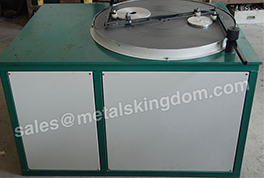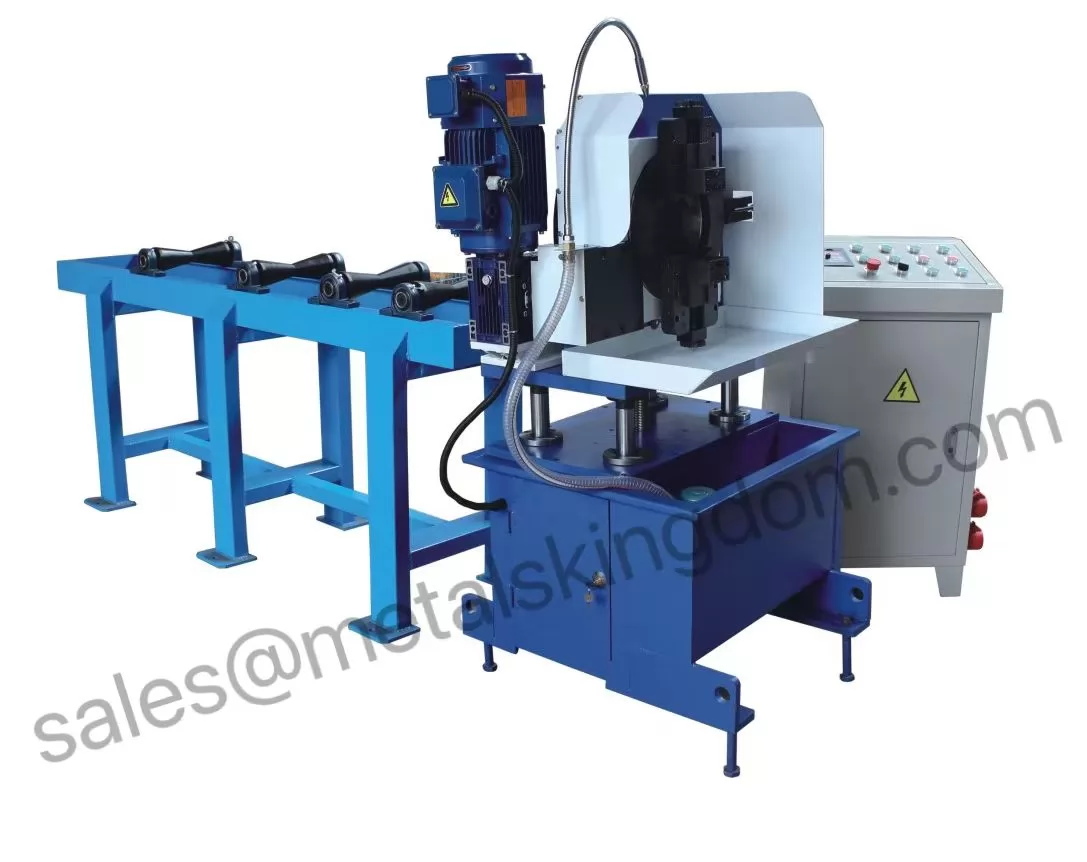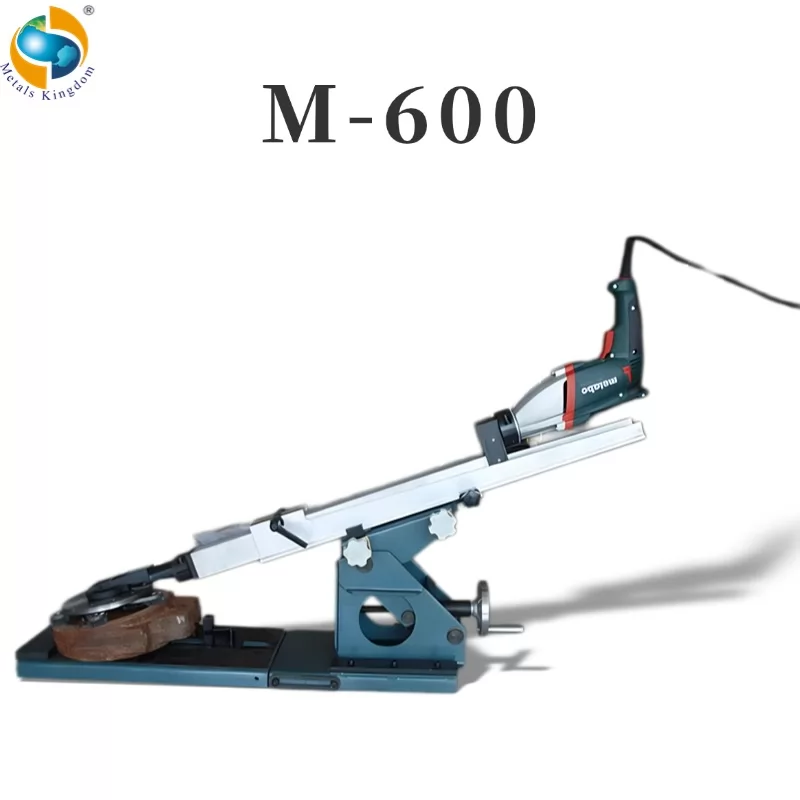After the valve is used for a long time, the sealing surface of the valve disc and the valve seat will be worn and the tightness will be reduced. Repairing the sealing surface is a large and important task. The main method of repair is grinding. For the severely worn sealing surface, it is surfacing welding, turning, and then grinding. The valve grinding machine supplier shares this article for you.
The grinding of the valve includes the cleaning and inspection process, the grinding process and the inspection process.
1. Cleaning and inspection process
Clean the sealing surface in the oil pan, use a professional cleaning agent, and check the damage of the sealing surface while washing. The fine cracks that are difficult to identify with the naked eye can be carried out by staining flaw detection. After cleaning, check the tightness of the disc or gate valve and the sealing surface of the valve seat. Use red and pencil when checking. Use red lead to test the red, check the seal surface impression to determine the tightness of the sealing surface; or use a pencil to draw a few concentric circles on the sealing surface of the valve disc and the valve seat, and then rotate the valve disc and the valve seat tightly, and check the pencil circle Wipes off the situation to confirm the tightness of the sealing surface. If the tightness is not good, a standard plate can be used to inspect the sealing surface of the disc or gate and the sealing surface of the valve body respectively to determine the grinding position.

Valve Grinding Machines
2. Grinding process
The grinding process is essentially a cutting process without a lathe. The depth of pitting or small holes on the valve head or valve seat is generally within 0.5mm, and the grinding method can be used for maintenance. The grinding process is divided into coarse grinding, intermediate grinding, and fine grinding.
Rough grinding is to eliminate defects such as scratches, indentations, and corrosion points on the sealing surface, so that the sealing surface can obtain higher flatness and a certain degree of smoothness, and lay the foundation for the middle grinding of the sealing surface. Rough grinding uses a grinding head or a grinding seat tool, using coarse-grained sandpaper or coarse-grained grinding paste, with a particle size of 80#-280#, coarse particle size, large cutting volume, high efficiency, but deep cutting lines and rough sealing surface. Therefore, rough grinding only needs to smoothly remove the pitting of the valve head or valve seat.
Middle grinding is to eliminate rough lines on the sealing surface and further improve the flatness and smoothness of the sealing surface. Use fine-grained sandpaper or fine-grained abrasive paste, the particle size is 280#-W5, the particle size is fine, the cutting amount is small, which is beneficial to reduce the roughness; at the same time, the corresponding grinding tool should be replaced, and the grinding tool should be clean. After the middle grinding, the contact surface of the valve should be bright. If you draw a few strokes on the valve head or valve seat with a pencil, turn the valve head or valve seat lightly around, and erase the pencil line.
Fine grinding is the last process of valve grinding, mainly to improve the smoothness of the sealing surface. For fine grinding, it can be diluted with engine oil, kerosene, etc. with W5 or finer parts, and then the valve head is used to grind the valve seat instead of drama, which is more conducive to the tightness of the sealing surface. When grinding, turn it around 60-100° in a clockwise direction, and then turn around 40-90° in the opposite direction. Gently grind for a while. It must be checked once until it is polished and can be seen on the valve head and valve seat. When there is a very thin line and the color is black and bright, lightly rub it with engine oil several times and wipe it with clean gauze. After grinding, eliminate other defects, that is, assembling as soon as possible, so as not to damage a ground valve head.
Manual grinding, regardless of rough grinding or fine grinding, always runs through the grinding process of lifting, lowering, rotating, reciprocating, tapping, and reversing operations. Its purpose is to avoid the repetition of the abrasive grain track so that the grinding tool and the sealing surface can be uniformly ground, and the flatness and smoothness of the sealing surface can be improved.
3. Inspection stage
In the grinding process, the inspection stage is always run through. The purpose is to keep abreast of the grinding situation at any time so that the grinding quality can meet the technical requirements. It should be noted that when grinding different valves, grinding tools suitable for various sealing surface forms should be used to improve grinding efficiency and ensure grinding quality.
Valve grinding is a very meticulous work, which requires constant experience, exploration, and improvement in practice. Sometimes the grinding is very good, but after installation, it still leaks steam and water. This is because there is an image of grinding deviation during the grinding process. The grinding rod is not vertical, skewed, or the angle of the grinding tool is different.
Because the abrasive is a mixture of abrasive and grinding fluid, and the grinding fluid is only general kerosene and engine oil. Therefore, the most critical part of the correct selection of abrasives is the correct selection of abrasives.
How to choose valve abrasives correctly?
Alumina (AL2O3) Alumina, also known as corundum, has high hardness and is widely used. Generally used to grind workpieces made of cast iron, copper, steel and stainless steel.
Silicon carbide (SiC) Silicon carbide is available in green and black, and its hardness is higher than alumina. Green silicon carbide is suitable for grinding hard alloys; black silicon carbide is used for grinding brittle and soft materials, such as cast iron and brass.
Boron carbide (B4C) has hardness second only to diamond powder and harder than silicon carbide. It is mainly used to replace diamond powder to grind hard alloys and grind hard chrome-plated surfaces.
Chromium oxide (Cr2O3) Chromium oxide is a kind of high hardness and extremely fine abrasive. Chromium oxide is often used in the fine grinding of hardened steel, and it is generally used for polishing.
Iron oxide (Fe2O3) Iron oxide is also a very fine valve abrasive, but its hardness and grinding effect are worse than chromium oxide, and its use is the same as chromium oxide.
Diamond powder is Crystal C. It is the hardest abrasive with good cutting performance and is especially suitable for grinding hard alloys.
In addition, the thickness of the abrasive particle size (the particle size of the abrasive) has a significant impact on the grinding efficiency and the surface roughness after grinding. During rough grinding, the surface roughness of the valve workpiece is not required to be high. In order to improve the grinding efficiency, coarse-grained abrasives should be used; during the fine grinding, the grinding allowance is small and the surface roughness of the workpiece is required to be high. Fine-grained abrasives can be used.
The valve modulates the abrasive, usually by adding kerosene and engine oil directly to the abrasive. The abrasive blended with 1/3 kerosene plus 2/3 engine oil and abrasive is suitable for coarse grinding; the abrasive blended with 2/3 kerosene plus 1/3 engine oil and abrasive can be used for fine grinding. When grinding workpieces with high hardness, the effect of using the above-mentioned abrasives is not ideal. At this time, three parts of abrasives and one part of heated lard can be used to blend together, and it will form a paste after cooling. When using, add some kerosene or gasoline and mix thoroughly.
Our company provides high-quality valve grinding machines. If you are interested in our products, please feel free to contact us.












